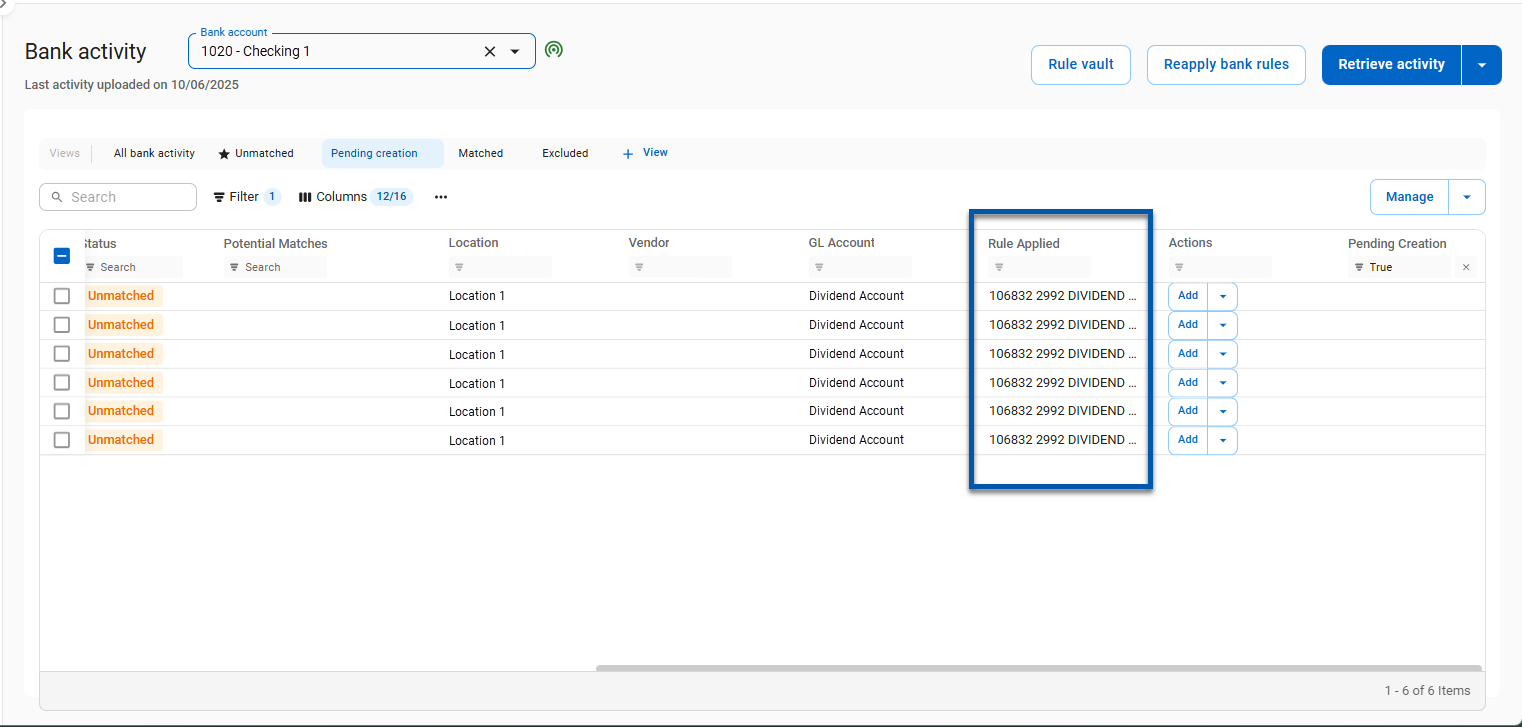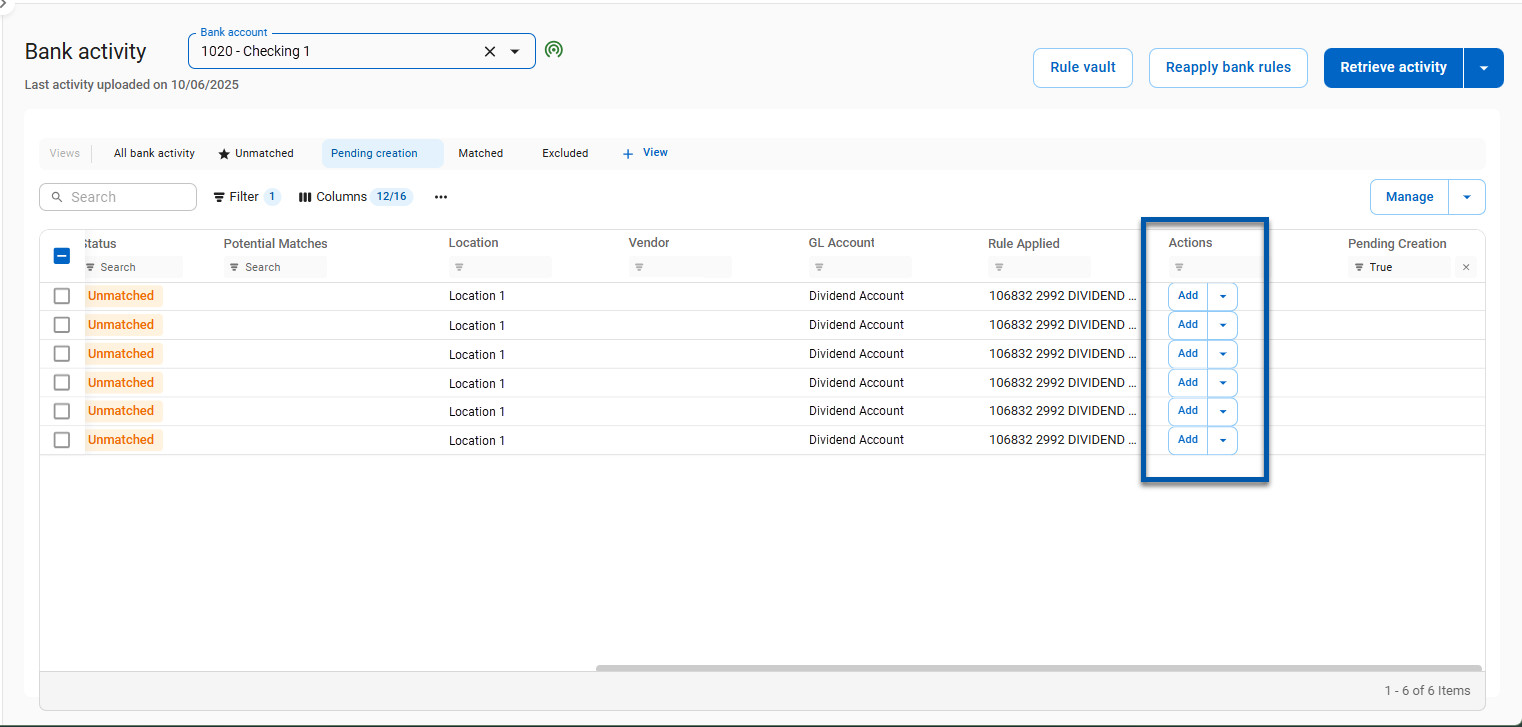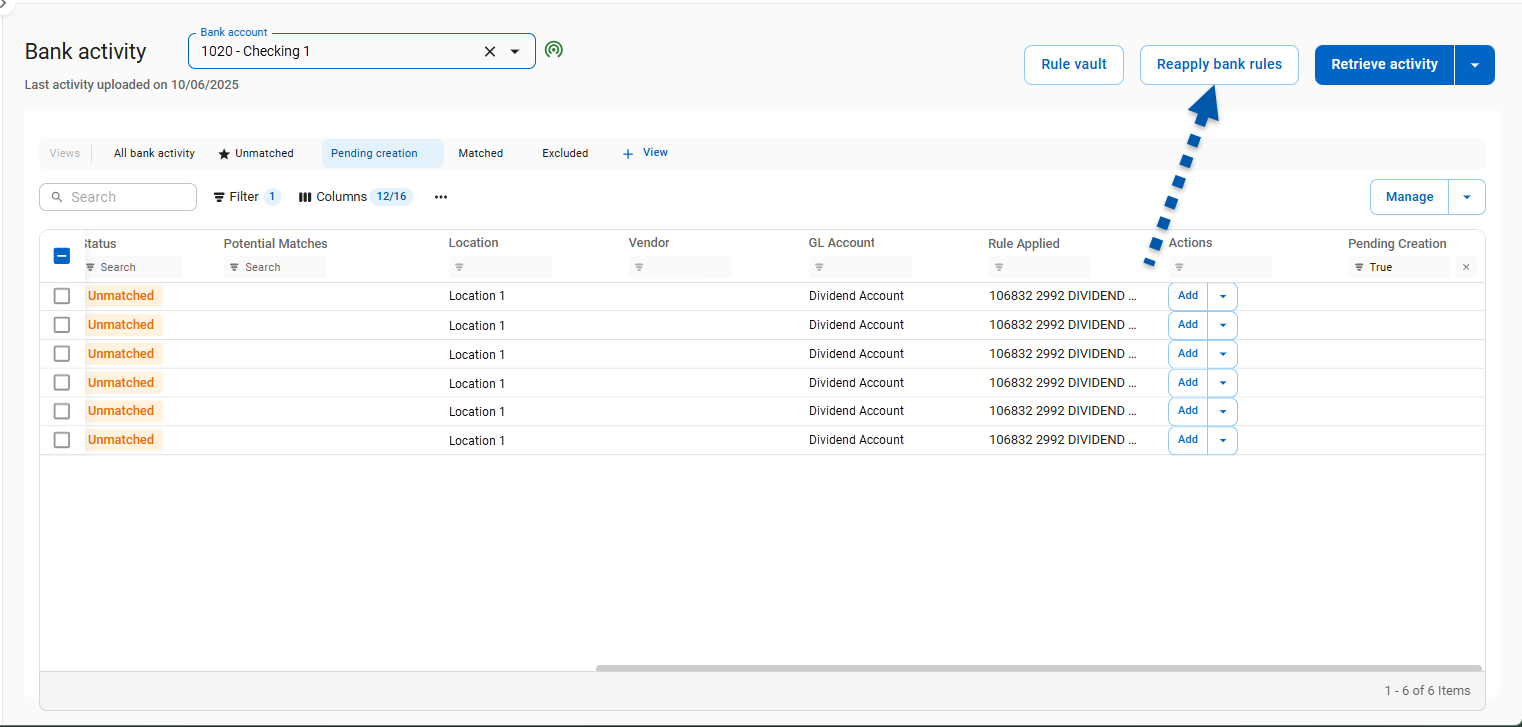The Rule Vault is part of Bank Activity and houses all active and inactive bank rules, including default matching rules, user-created matching rules, and create transaction rules. Bank rules determine how R365 transactions are matched or created from imported bank activity.
When bank activity matches an existing R365 transaction, it moves to the Matched/Excluded tab. When a ‘create transaction rule’ applies, the associated activity moves to the Rule Applied tab for review.
Security
The following permissions are associated with the Rule Vault:
Banking → Bank Activity → Bank Rules → View Bank Rules
Banking → Bank Activity → Bank Rules → Edit Bank Rules
Banking → Bank Activity → Bank Rules → Create Bank Rules
Banking → Bank Activity → Bank Rules → Delete Bank Rules
Banking → Bank Activity → Bank Rules → Activate Bank Rules
These permissions can be added to custom user roles or individual users. The Permission Access report can be used to determine which user roles or users already have these permissions assigned. For more information, see User Setup and Security.
Enable the Rule Vault
The Rule Vault is an upgraded version of the Bank Rules tab, which is removed when this feature is enabled. All existing rules live in the Rule Vault, and even though rules can still be added on the Bank Activity screen, once created, they exist in and can be accessed from the Rule Vault.
The Rule Vault is enabled on the Miscellaneous tab of System Preferences.
When the New Bank Activity Experience is enabled, the Rule Vault will automatically be enabled.
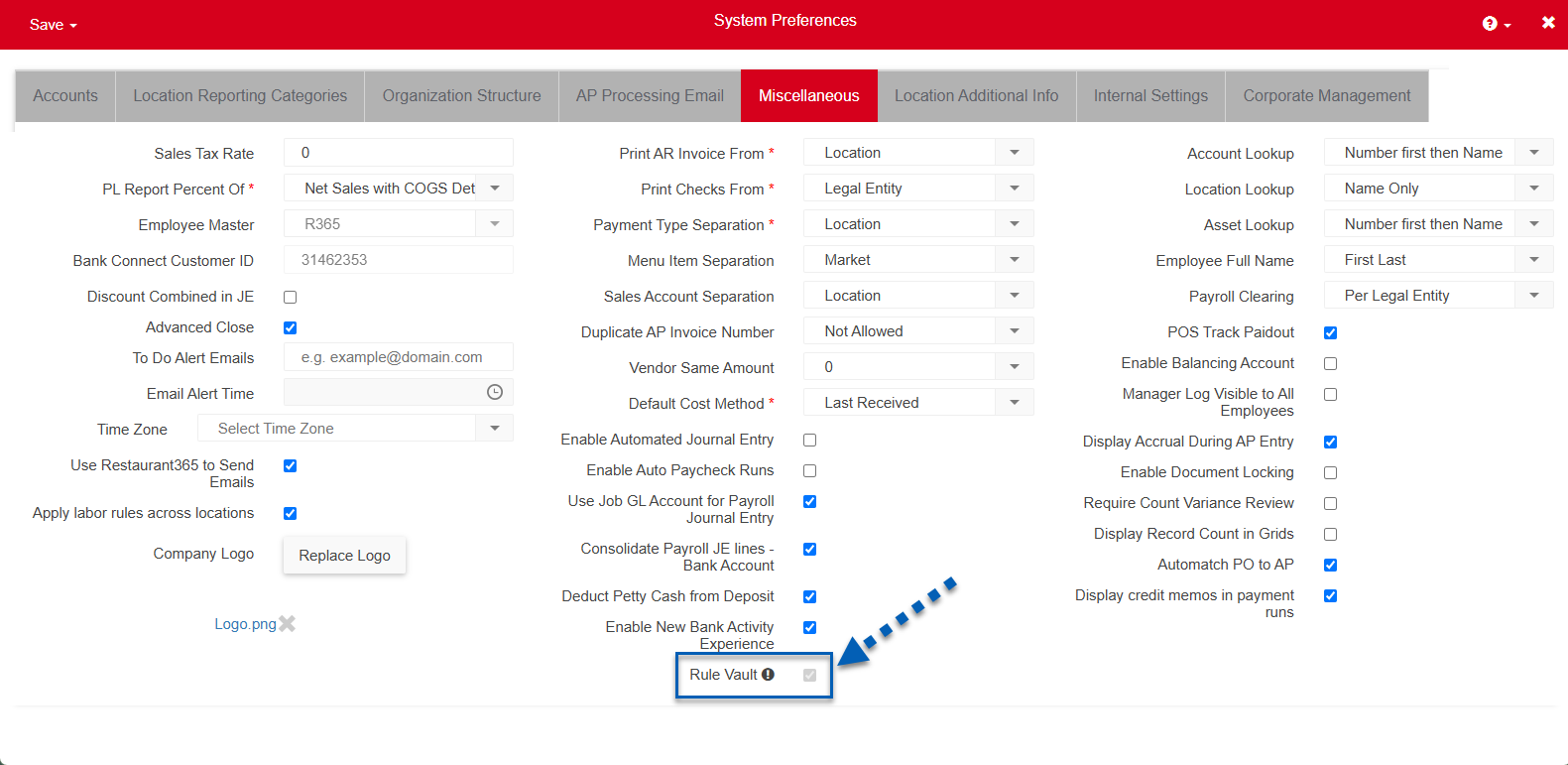
Rule Vault Page
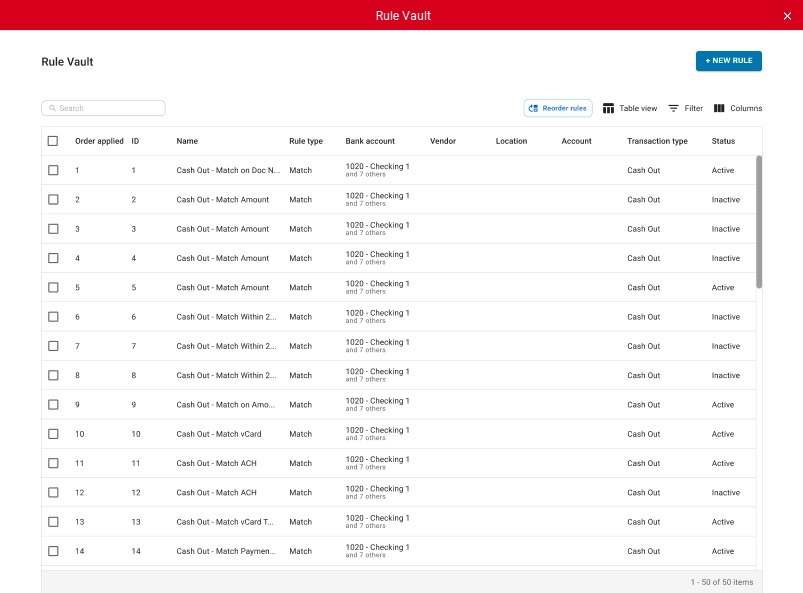
The Rule Vault page is accessed from Bank Activity and contains all user-created and system generated rules.
From the Rule Vault page users can:
View active and inactive rules
Search and filter rules
Rule Vault Order
By default, rules are sorted and applied in the following order:
R365 Default Matching Rules
User Created Matching Rules
Creation Rules
The Order Applied column determines the order in which rules are applied to bank activity. Users can reorder bank rules to adjust the order rules are applied or reset the bank rule order to return it to the default order.
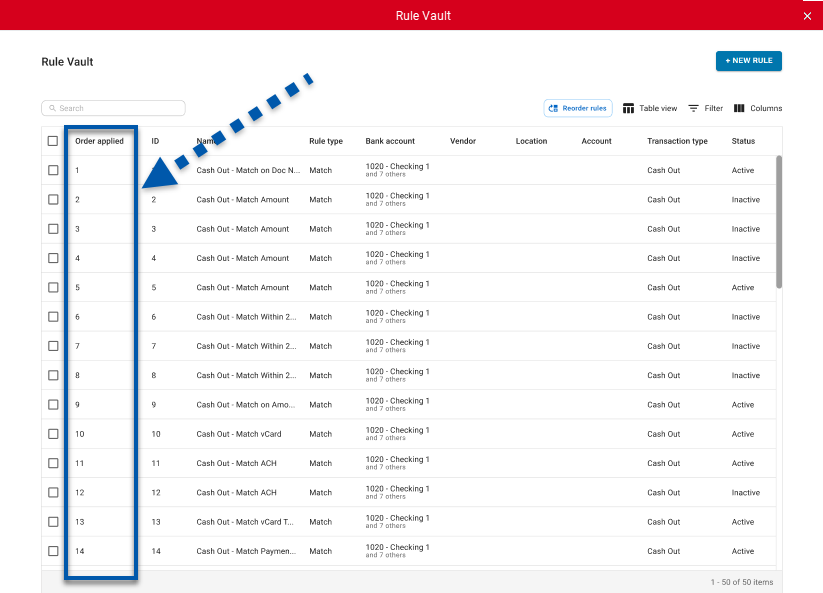
Rule Types and Statuses
Rule Types
The Rule Vault contains two types of rules:
Matching Rules: Pair imported bank activity to existing R365 transactions based on specific conditions.
Matching rules can be either system-generated (default) or user-created/custom.Default matching rules are system generated and cannot be edited or deleted.
Default matching rules can be marked inactive.
User-created rules that create new R365 bank transactions (deposits or expenses) based on defined conditions.
Cash in transactions create bank deposits.
Cash out transactions create bank expenses.
Transaction rules can apply to one or multiple bank accounts. However, because the detail location for transactions is set per rule, organizations with separate bank accounts per location should considering creating separate rules to ensure transactions are recorded accurately.
Rule Statuses
Each rule has one of two statuses:
Active: The rule actively matches or creates transactions based on it's conditions.
Inactive: The rule is disabled, and and no transactions will be created or matched, even if its conditions are met.
Learn how to update the status of a rule.
Rule Conditions
Conditions define the criteria that must be met for a rule to apply. When new bank activity is imported, R365 applies active rule in order until a rules’s criteria is met. If the bank activity matches an active rule’s conditions, the system either matches the activity to an existing transaction (for matching rules) or creates a new transaction (for create transaction rules).
Conditions for Matching Rules can be set to reference the Bank Activity details or existing R365 transaction details. Transaction field, functions, and rule value options are determined by the source and transaction field selected.
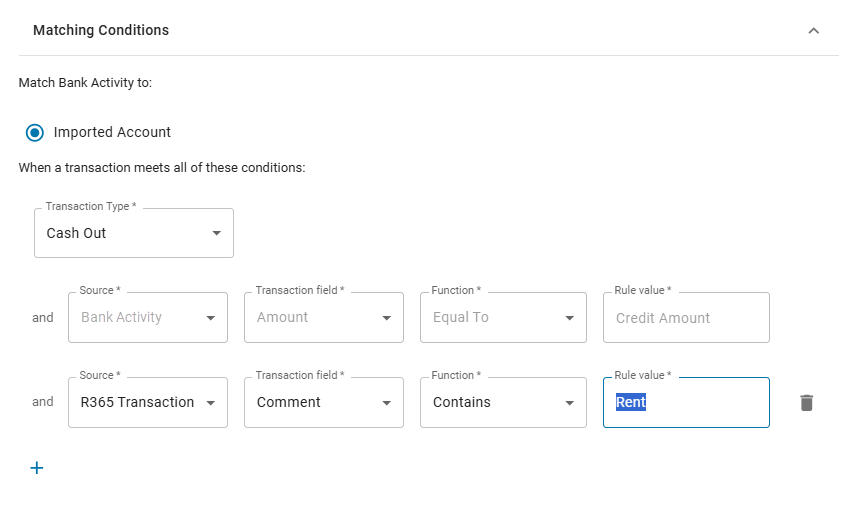
If there are multiple potential matches for the same rule, or if there is a potential match to a batch transaction, the bank activity will remain in the unmatched tab with an ‘M’ in the column to the right of the location column to indicate there are multiple potential matches. If imported bank activity meets the rule conditions for more than one create transaction rule, only the first match—based on rule order—is applied.
Created Transactions
Transactions created by Create Transaction rules use the settings applied in the Create Transactions Rule record, including:
Transaction Type: Cash in or Cash out (bank deposit or bank expense)
Location: Detail location selected in the Resulting Bank Expense/Deposit section of the rule.
Vendor: The vendor that will be associated with the resulting bank transaction.
Account: The account that will be debited or credited in the bank transaction.
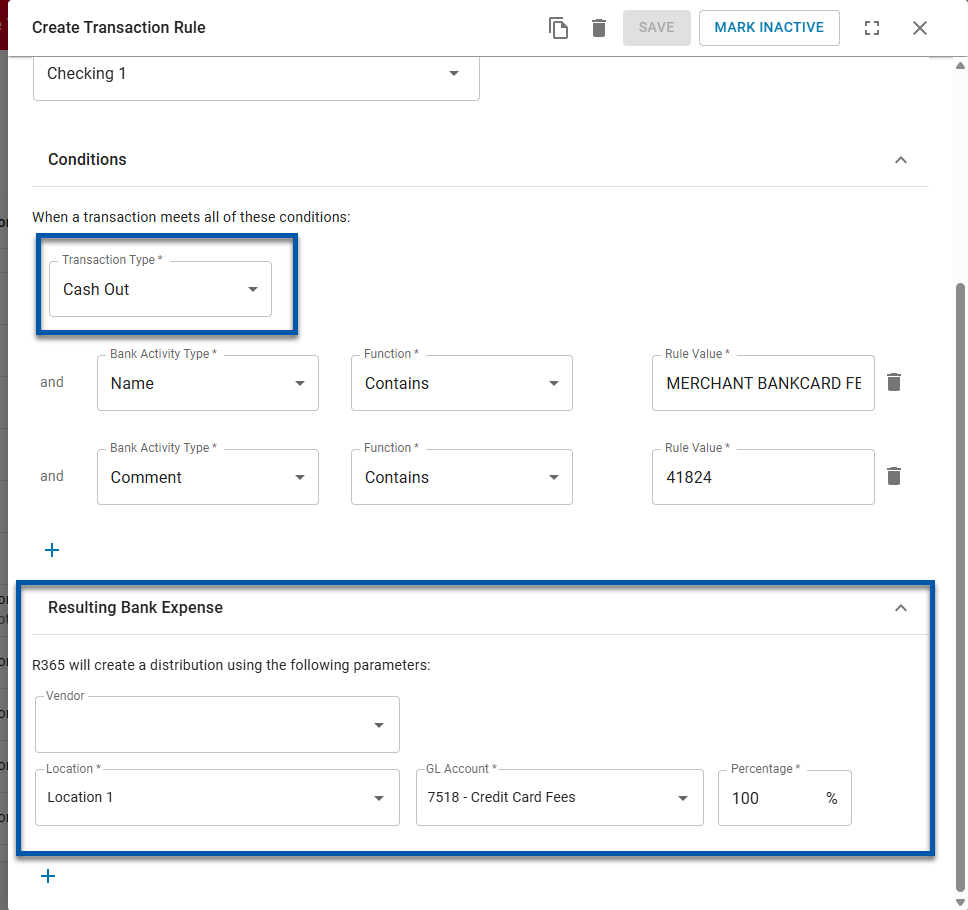
Reviewing Activity with Rules Applied - Bank Activity
Create Transaction Rules
Transactions created by a create transaction rule are reviewed in Pending Creation view of the Bank Activity page.
From this view, users can:
Review the bank activity where a create transaction rule was applied
Add the created transaction(s) to R365
If changes to the rule are needed, the rule can be updated from the Rule Vault, and then rules can be reapplied in bank activity with the Reapply Bank Rules button.
Matching Rules
Matching rules connect imported activity to existing transactions recorded in R365. When a matching rule is applied, the matched transaction moves from an Unmatched status to a Matched status. The applied rule can be reviewed in the Rule Applied column of the Matched view in Bank Activity.
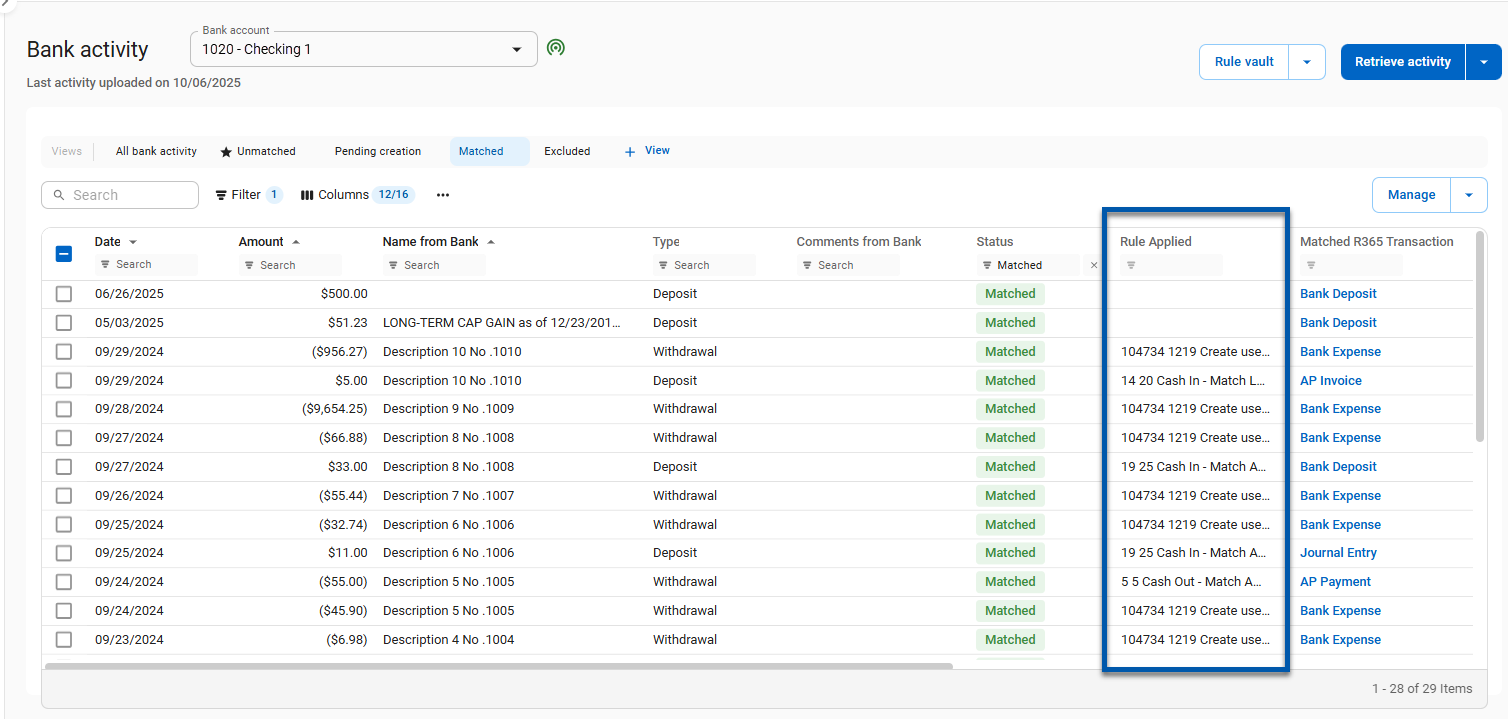
Reviewing Activity with Rules Applied - Legacy Bank Activity
Create Transaction Rules
Transactions created by a create transaction rule are reviewed on the Rule Applied tab.
On this tab, users can:
Review the bank activity where a create transaction rule was applied
Preview the the transaction GL impact
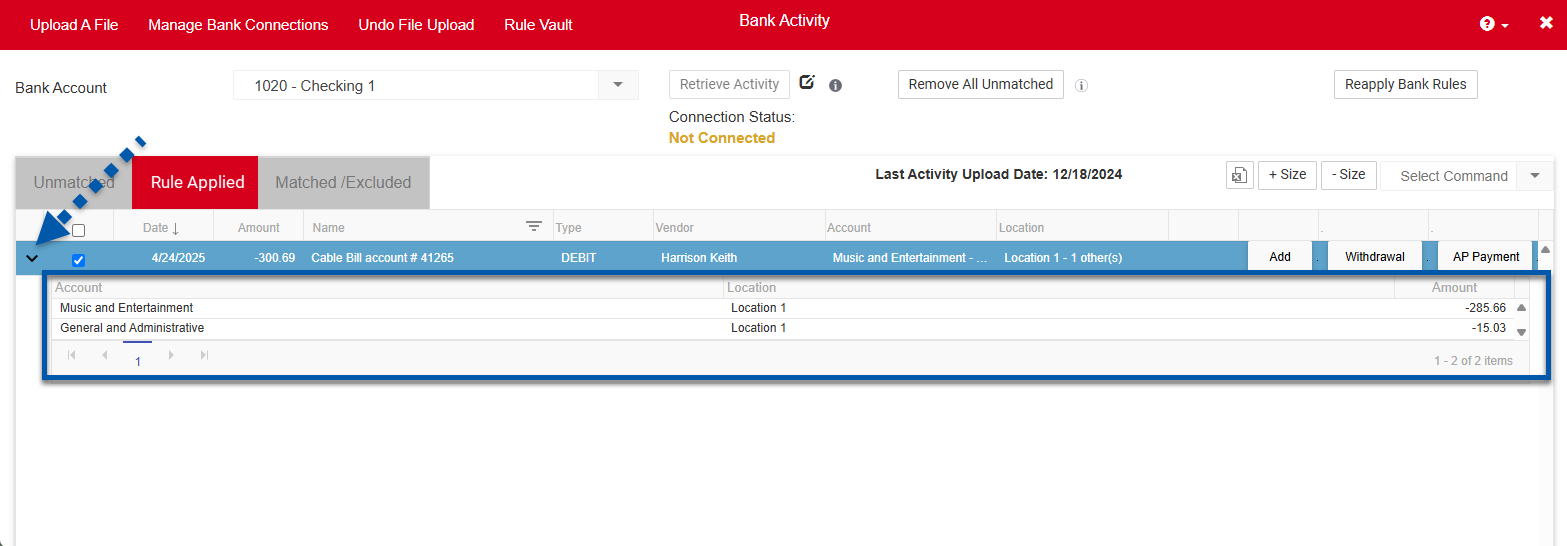
Add the created transaction(s) to R365
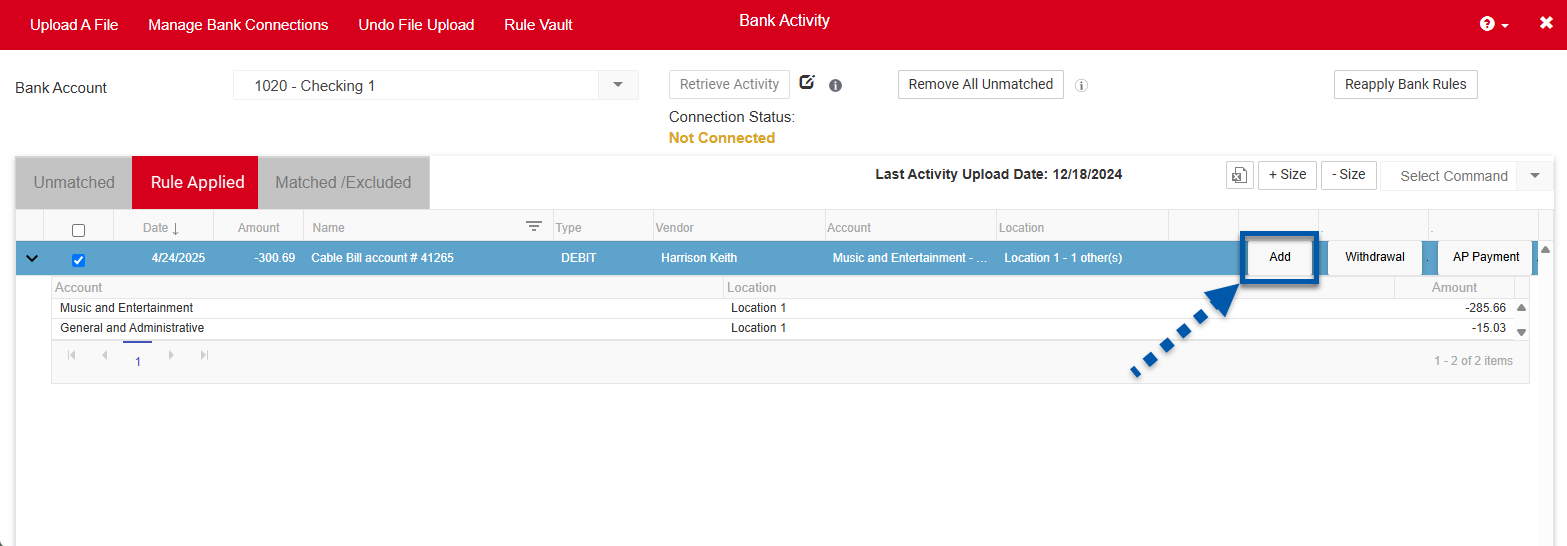
If changes to the rule are needed, the rule can be updated from the Rule Vault, and then rules can be reapplied in bank activity with the Reapply Bank Rules button.

Once the transaction is added, the bank activity moves to the Matched/Excluded tab, and the applied rule is listed in the Rule Applied column.

Matching Rules
Matching rules connect imported activity to existing transactions recorded in R365. When a matching rule is applied, the matched transaction moves from the Unmatched tab to the Matched /Excluded tab. The rule used to match the transaction is displayed in the Rule Applied column.

